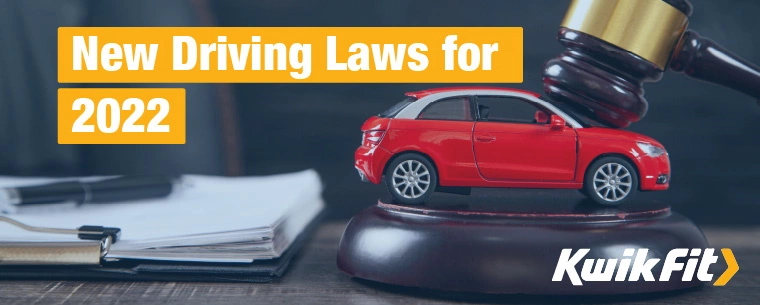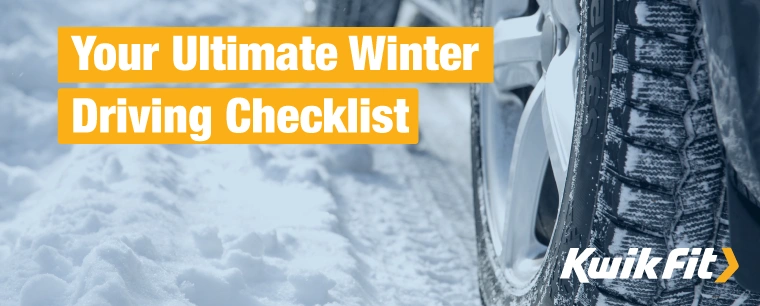Changes to the law in 2022 that every driver should be aware of
Jack Dreyer | Wednesday 17th August 2022 9:00am

Once you’ve passed your test, got your hands on your licence, and have the keys to your new car, it can be easy to stop keeping up to date with changes to driving laws. But – as with most laws – you “not knowing it was a law” unfortunately doesn’t get you off the hook! Importantly, changes to driving laws aren’t there to catch drivers out but are there to create a safer road for everyone to be on.
So what are new laws that you need to be aware of? Let’s see.
Expansion of low-emission zones in various cities

London recently decided to expand the ultra-low emissions zone (ULEZ) to the A205 ring road. This is past Lewisham & Brixton in the South & South-East, near Ealing in the West, past Tottenham in the North, and up to Barking in the East.
While many have decried this as a cash grab by TfL, there’s no denying that the introduction of the ULEZ has had a significant positive impact on the air quality in London. A study commissioned by the Mayor of London found a 97% reduction in people living in areas of London with illegal levels of emissions. This translates to a real-term reduction in emissions rather than vastly depopulated areas of London.
That said, an article from Imperial College, which accepted £54m in donations from fossil fuel companies between 2017 & 2022, claims that the initial effects were ‘marginal’. The effects, of course, would be marginal within just the first 8 weeks of implementation that the article focuses on. Crucially, roadside nitrogen dioxide pollution was reduced by at least 44% within the ULEZ boundaries – alongside a host of other direct pollutants.
What the research most strongly suggests is that low emissions zones must be implemented alongside other measures such as greener, more accessible public transport, adequate transport links, and (perhaps) greater subsidies for zero-emission vehicles for residents within the ULEZ.
So what does this mean for drivers?
In the short term, unfortunately, it most impacts those who can’t yet afford to switch to a fully electric vehicle. But in the long term, it improves the health of everyone in the area – as well as the wider environment.
Having seen the positive effects of London’s ULEZ, Birmingham & Bath introduced low emissions zones in their centres in 2021, and a number of other larger UK cities are planning to follow suit in order to reduce general emissions. While the particular exemptions vary from city to city, you can check if your vehicle is exempt using TfL’s exemption checker.
Using mobile phones while driving

Use of mobile phones while driving has become much stricter since new legislation in March 2022. Using your mobile phone while driving could now see you slapped with a £1000 fine, up to 6 points on your licence, or even a full ban.
While this sounds dramatic, these actually seem like common sense changes – we’ve all seen someone blaze past on the motorway, going significantly over the speed limit, while holding a phone to their ear. Stronger repercussions should hopefully see a real reduction in this behaviour.
The explicit ban is on things like taking pictures, selecting music, playing games, or watching videos while driving. Importantly, you can still use your phone as a sat-nav if it’s in a stable cradle! To be on the safe side, we recommend setting up hands-free settings for your phone so that you can take calls (though it’s best to wait until you’ve finished driving) or change songs using hands-free voice commands. Keep in mind, though, that you could still be prosecuted for this if you were deemed ‘distracted’ and therefore not in control of your vehicle.
All new builds must have EV charging points

As of 30th June 2022, changes to the building regulations require all new builds to have EV charging points for every associated parking space of the build. This is a significant change that will really encourage the uptake of electric vehicles. After all, you currently have to have a charging point retro-fitted to a property (even many new builds) – which can often involve costly excavations or settling for slow charging.
Additionally, from December 2022, chargers on new builds will need to be ‘smart’ chargers. This is all in line with a planned ban on the sale of new combustion engine vehicles by 2030.
Increased council powers for minor traffic offences

Historically, traffic offences would have to be enforced solely by police officers – but councils will soon be able to apply for permission to enforce fines for minor moving traffic offences like stopping in hatched yellow box zones, driving in bus lanes, and going the wrong way on one-way streets.
Councils are only currently allowed to enforce parking penalties and a few other minor ones, but councils who get granted permission to do so will be able to enforce up to £70 for such offences.
Changes to highway code, giving more priority to non-drivers

While pedestrians, cyclists, and horse riders already have priority in a number of situations, the highway code has been changed to give priority in a greater number of instances to them.
A new hierarchy has been established to give greater protection to those most at risk in the event of a collision.
For example, pedestrians that have started crossing a road have priority over cars who want to turn into the road. And at zebra crossings and parallel crossings, cars must give way to pedestrians currently waiting to cross.
Another new rule (H3) provides guidance for turning and overtaking when sharing a road with cyclists and horse riders. The new rule specifies that when cars or motorcycles are turning into or out of a junction, or changing direction or lane, they are not allowed to cut across vulnerable road users.
Guidance also dictates that drivers should leave a minimum of 5ft (1.5m) when passing a cyclist (up to 30mph) and 6.5ft (2m) when passing horse riders or pedestrians.
Check out our blog for other news!
For other news and fun car-related reads, check out our blog! And if you need your car looked at by an expert, trust the experts at your local Kwik Fit.
Any facts, figures and prices shown in our blog articles are correct at time of publication.
Featured Articles
Is Your Car Battery Ready for Winter?
Monday 11th November 2024
Is the UK on the verge of ‘the coldest winter for 50 years?’ Even if El Niño doesn't hit the UK this winter, reduce the risk of a winter breakdown by making sure your car battery is winter-ready.
Your Ultimate Winter Driving Checklist
Monday 31st October 2022
Driving in the colder months presents many challenges. Breakdowns are far more common in winter, so make sure you’re prepared with these essentials.
How to Get Your Car Ready for Winter
Wednesday 28th September 2022
Winter can be a harsh season for your car but planning ahead by carrying out some basic maintenance and packing some essential kit should help you avoid a winter breakdown.







